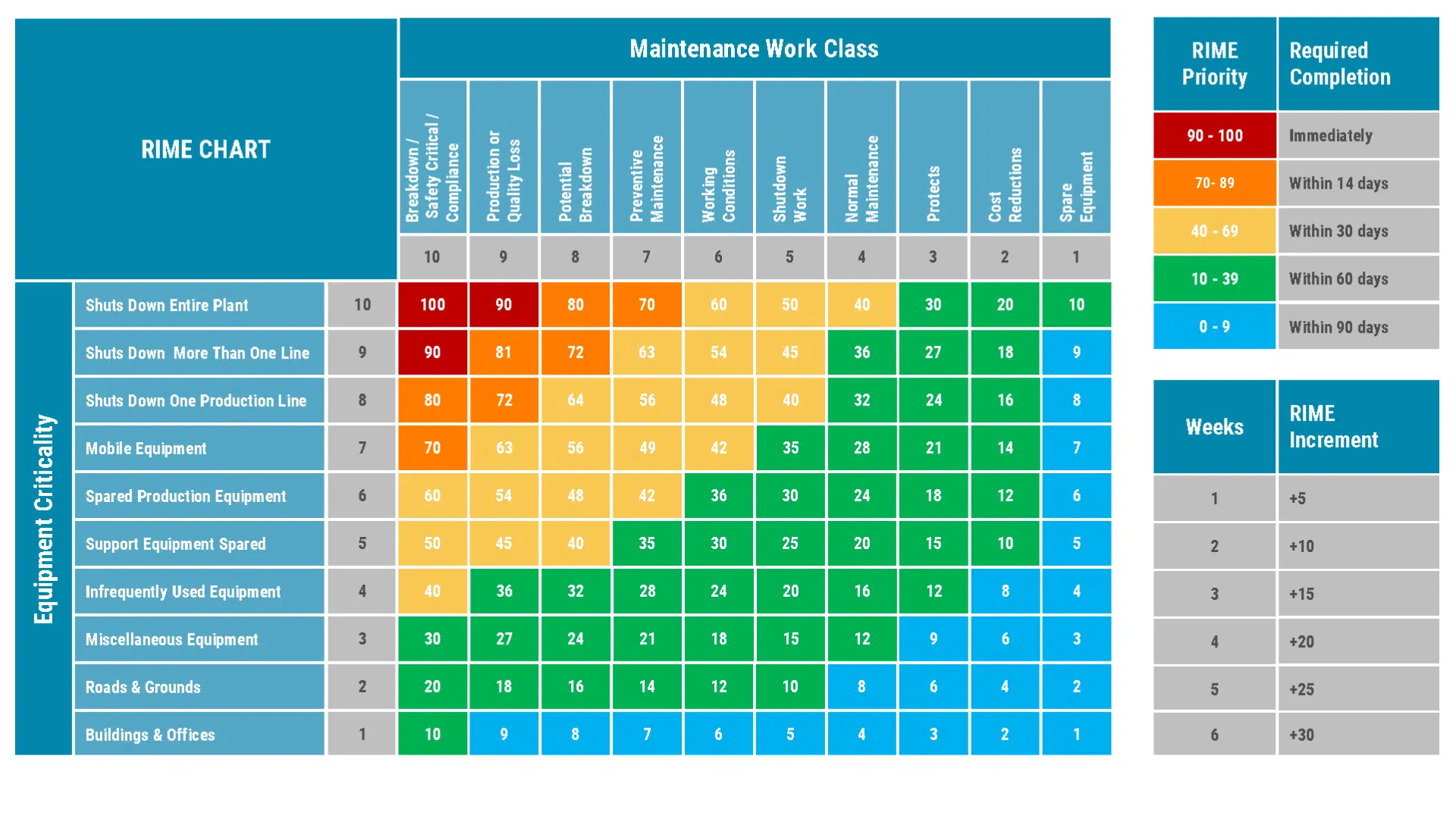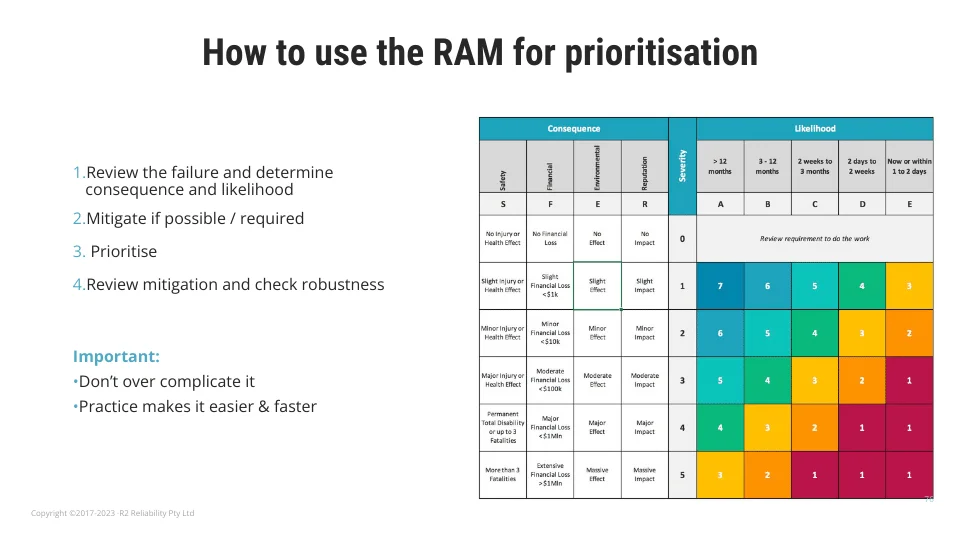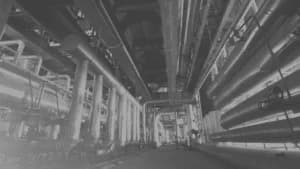How to Prioritise Maintenance Work Requests: 2 Proven Methods for Objective Prioritisation
Is your team drowning in emergencies?
Too often, work gets prioritised based on emotion—what feels urgent in the moment, or who shouts the loudest. You’ll often hear people shouting: “This is an emergency, we need to fix it NOW!”
But is it really an emergency?
When you step back and look objectively, you’ll often find that many of these jobs can be properly planned and scheduled. They don’t need to disrupt your frozen weekly schedule. And that matters, because emergency maintenance costs three to five times more than planned maintenance.
That’s why you need to prioritise work requests objectively, not emotionally. And that’s what we’ll be talking about in this article.
Importance of Prioritisation
If you get prioritisation wrong, your whole planning and scheduling process will collapse into firefighting.
Even worse, prioritisation is dynamic. The same failure on the same equipment can have two very different priorities depending on plant conditions. For example:
- Imagine two production-critical pumps. Pump A is a duty pump and Pump B is a standby pump. Pump A fails, but Pump B is running reliably. The work request is important, but not an emergency. You can schedule it for a couple of weeks later, giving planners time to do the job properly.
- Now imagine Pump B is out for major maintenance. Pump A fails, and suddenly production stops. The exact same failure has now become an emergency because it directly threatens revenue.
That’s why you need a clear, objective process that both Maintenance and Operations follow together. Operations, after all, often have the best visibility into real-time plant conditions.
Without this structure, you fall into the trap of subjective prioritisation: high/medium/low, or 1–5 scales (which is very common in many industries). These sound simple, but in practice they quickly get abused. Everyone inflates the priority of their own requests, and soon nothing is truly “high priority.” The result? Confusion, wasted time, and a schedule constantly broken by supposed emergencies.
In our course PS100: Implementing Maintenance Planning & Scheduling, we teach two proven methods for prioritisation: RIME (Ranking Index for Maintenance Expenditure) and RAM (Risk Assessment Matrix).
Let’s discuss each one in a bit more detail.
Method 1: Ranking Index for Maintenance Expenditure (RIME)
RIME uses a matrix that combines equipment criticality with maintenance work class to generate an objective score.

Here’s how it works:
- Rows: Equipment criticality is ranked in rows, from the most critical equipment (e.g., plant-wide shutdown risk) to the least critical (e.g., office equipment).
- Columns: Maintenance work classes are arranged in columns, from the highest priority work (e.g., safety-critical repairs) to the lowest (e.g., non-urgent maintenance).
Each row and column is given a score (1–10). Multiply them, and you get a criticality number between 1 and 100.
For example:
- A safety-critical repair on a production-critical pump might score 100.
- Preventive maintenance on a spare motor might score 42.
- Routine work on office equipment might score 5.
To make the system easier to use, most organisations colour-code the scores into priority bands:
- Red (90–100): do now, break into the schedule.
- Orange (50–89): high, plan as soon as possible.
- Yellow (20–49): medium, schedule within a few weeks.
- Green (10–19): low, schedule within a few months.
- Blue (below 10): lowest, schedule when convenient.
The RIME Increment
One of RIME’s most useful features is that work requests increase in priority as they age. For example, you might add +5 to the score each week after the due date. This ensures older work doesn’t fall through the cracks.
Method 2: Risk Assessment Matrix (RAM)
RAM is a risk-based approach that prioritises work based on two factors:
- Likelihood: How likely is the failure to occur?
- Consequence: What would the impact be if it happened?

The RAM matrix then divides these into categories and calculates risk levels based on their intersection. For example:
- High likelihood + high consequence = high priority.
- Low likelihood + low consequence = low priority.
Mitigations can then be applied to reduce either the likelihood or the consequence, which lowers the priority. This allows you to plan and schedule the work effectively.
Example: Loose Handrail
Let’s say an operator spots a loose handrail on a raised walkway. If someone leans on it, they could fall and suffer a serious injury or even death. That’s why if you would score that on the RAM chart, that’s a priority 1 job.
- Severity: 4 (serious injury/fatality).
- Likelihood: D (could happen in the next few days).
- RAM score = Priority 1 job, urgent enough to break the schedule.
But what if you immediately put up a robust barricade to block access?
- The severity stays 4, but likelihood drops to B (unlikely).
- Now it’s a Priority 3 job—important, but can be planned and scheduled properly.
This is the power of RAM: it helps you assess risk realistically, apply mitigations, and reduce unnecessary emergencies.
Implementation: How to Start Using RIME or RAM
If you want to start objectively prioritising your work requests, then you can start by following these 5 simple steps:
- Agree on criteria. Define your equipment criticality and maintenance work classes (RIME) or consequence categories (RAM).
- Build the matrix. Keep it simple at first, then refine over time.
- Train your teams. Maintenance and Operations must use the same method consistently.
- Fix priorities. Once a job is prioritised, don’t constantly reshuffle because it wastes time and undermines trust.
- Document decisions. Record the reasoning, risks, and mitigations for each work request. This helps planners and builds organisational learning.
Next Steps
You can start using the charts today. But if you want to get the full value from RIME and RAM, you’ll need more than templates—you’ll need to know how to apply them in your plant, with your people, and adapt them to your context.
That’s exactly what we cover in PS100: Implementing Maintenance Planning & Scheduling. We show you step by step how to apply RIME and RAM effectively, so you can break out of the vicious cycle of reactive maintenance.
